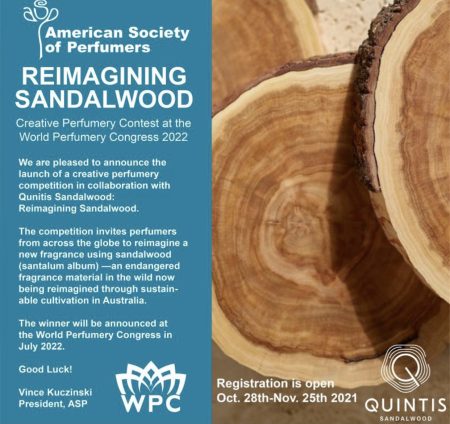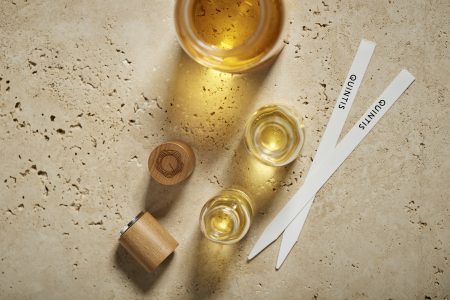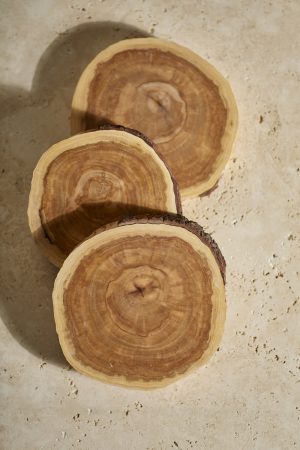
Quintis owns and manages one of the world’s largest Indian sandalwood plantation, with 5.5 million trees spanning 12,000 hectares.© Quintis
The ‘Quintis Sandalwood Reimagined’ Competition: Quintis Sandalwood, in partnership with the American Society of Perfumers, is launching a global competition for perfumers of all experience, inviting them to reimagine the ancient botanical of Indian sandalwood within a fragrance, using it as their muse.

© American Society of Perfumers
“Through the competition, perfumers will have the chance to be recognized as a world leader in fragrance creation, with winners announced at the World Perfumery Congress in July 2022. “Join perfumers from across the globe in a test of creativity and craft, inspired by our muse, Indian sandalwood (S.album). Fragrance submissions will be judged under rigorous conditions by a panel of professional perfumers from the American Society of Perfumers on blotter and skin.
Finalists will then be displayed at SIMPPAR in France in June 2022. Finally, the Global Winner and an Emerging Talent will be named at the World Perfumery Congress in July 2022, winning prizes of $10,000 and $2,000 respectively”.
Registration is now open through November 25th, 2021. Learn how to enter here.
I Invited Professional Perfumer Sherri Sebastian and CaFleureBon Contributing Editor (Notes from The Lab) and Vice President of the American Society of Perfumers to share her sandalwood experiences throughout the years, including how Quintis Indian Sandalwood-Michelyn Camen, Editor-in-Chief

Sherri Sebastian perfumer, Vice President of The American Society of Perfumers and CaFleureBon Editor © Sherri Sebastian
People often associate fragrances with their favorite childhood memories, like their mother’s perfume or the smell of freshly-baked cookies in their grandmother’s kitchen. My first memories of scent were also impactful, but my mother didn’t wear perfume and my grandmother’s kitchen smelled more like pot roast than cookies, so I associate my earliest scent memories with the fragranced products I used every day. From the time I was ten years old, I began choosing the scented products I used based on my outfit, activities, and mood. I loved all the fragrances in my collection equally—from body splash to deodorant—and they were an intrinsic part of my day. But it wasn’t until my late teens that I experienced a fragrance note that forever changed my relationship with perfumery.
During my sophomore year of college, I decided to follow the Grateful Dead for a semester instead of attending my classes in chemical engineering. At this point, my product obsession from my earlier years had faded away, and I had stopped wearing fragrances. I didn’t know it at the time, but my decision to follow “the Dead” would change the trajectory of my career. And it all started with a little glass vial with the word “Shalimar” written on its label. Grateful Dead concerts, or “Dead shows” were unlike anything I’d ever experienced – more like a circus than a typical music concert. They usually took place over a few days, with people camping out nearby. Instead of mass-produced t-shirts, vendors sold hand-made bracelets, perfume oils, and crystals.

The Real Deal: Vintage Shalimar courtesy of Perfumer Pierre Gueros of Symrise from the Osmotheque’s 25th Anniversary for CaFleureBon 2016©
The vial I purchased—clearly not the real “Shalimar”— contained a dark brown oil with the most alluring and transformative scent I had ever experienced. I started wearing it constantly, and its rich amber scent put me into a state of tranquility, which I remember vividly to this day. When it ran out, I put it in a small plastic container to protect the glass and prevent the residual oils from evaporating. I came to learn the prominent woody note I couldn’t get enough of was sandalwood. For years I would open the plastic container just to get a whiff of the residual aroma, as it slowly faded. I graduated from college with a degree in Food Science, and after a brief stint in a Brooklyn flavor house, I soon traded in flavors for fragrances and landed a position as an apprentice perfumer at a fragrance house in New York City. During my training I compounded (or blended) thousands of formulas for my mentors. My favorite formulas were woody, amber fragrances reminiscent of my beloved “Shalimar.”

Indian sandalwood oil is renowned for its woody, milky, and creamy notes.
At the beginning of my career, Indian sandalwood flowed freely, and santalum album was considered the premium grade for its signature creamy, smooth, woody profile. But as time went by, this essential oil all but disappeared from the perfumery palette due to non-sustainable growing practices. My fellow perfumers and I did our best over the years, trying to create a substitute for this multifaceted ingredient with our skills and creativity, but nothing ever came close to the character of Indian sandalwood. Then one day, I received a sample of sandalwood from Quintis, an Australian company. By this point, I’d gotten used to santalum spicatum, which while also lovely with its natural earthy woody appeal, is much different than Indian sandalwood. To my surprise, as I leaned back in my chair with a freshly dipped blotter in hand, I was taken back in time to a lost but familiar place of peace and contentment. Wait…what…no, it can’t be…. But sure enough here I was, enveloped in the aura of my beloved Indian sandalwood, santalum album. But how? As it turns out, a company called Quintis Sandalwood had brought back Indian sandalwood in its pure form. After two decades of work, Quintis now has the largest sandalwood estate in the world, with more than 5.5 million trees, all grown using the most advanced technologies and sustainable methods. Their operation is truly remarkable – you can read more here.

Known as the King of woods Indian sandalwood heartwood is used to make sandalwood oil through steam distillation© Quintis
The “king of woods” was officially back and I immediately started using it in my own products, including No. 17 perfume oil and Align face oil. Is it a coincidence that these happen to be the two best sellers in my collection? I think not. When Quintis reached out to me, as the Vice President of the American Society of Perfumers, to partner with them on an upcoming fragrance competition, I was delighted. The competition, “Reimagining Sandalwood,” has been created to celebrate the creative perfumery process and the sustainable return of Indian sandalwood.

Although I will not be participating as a perfumer in the contest or judging the submissions, I will be cheering on all of the fragrance creators across the globe who enter their interpretation of this precious ingredient, to be used in an eau de toilette. I wonder what their inspirations will be…Have they ever attended a “Dead” show? Will their fragrances be soft and sensual or rich and bold?
I can’t wait to experience their new reimagined versions of Indian sandalwood. Who knows, maybe I will even break out an old tie-die to honor the occasion and the winners, who will be announced at the World Perfumery Congress next July. Most of all, I will be ready to experience a brand-new fragrance featuring my beloved “first” favorite ingredient.
—Sherri Sebastian, Contributing Editor
